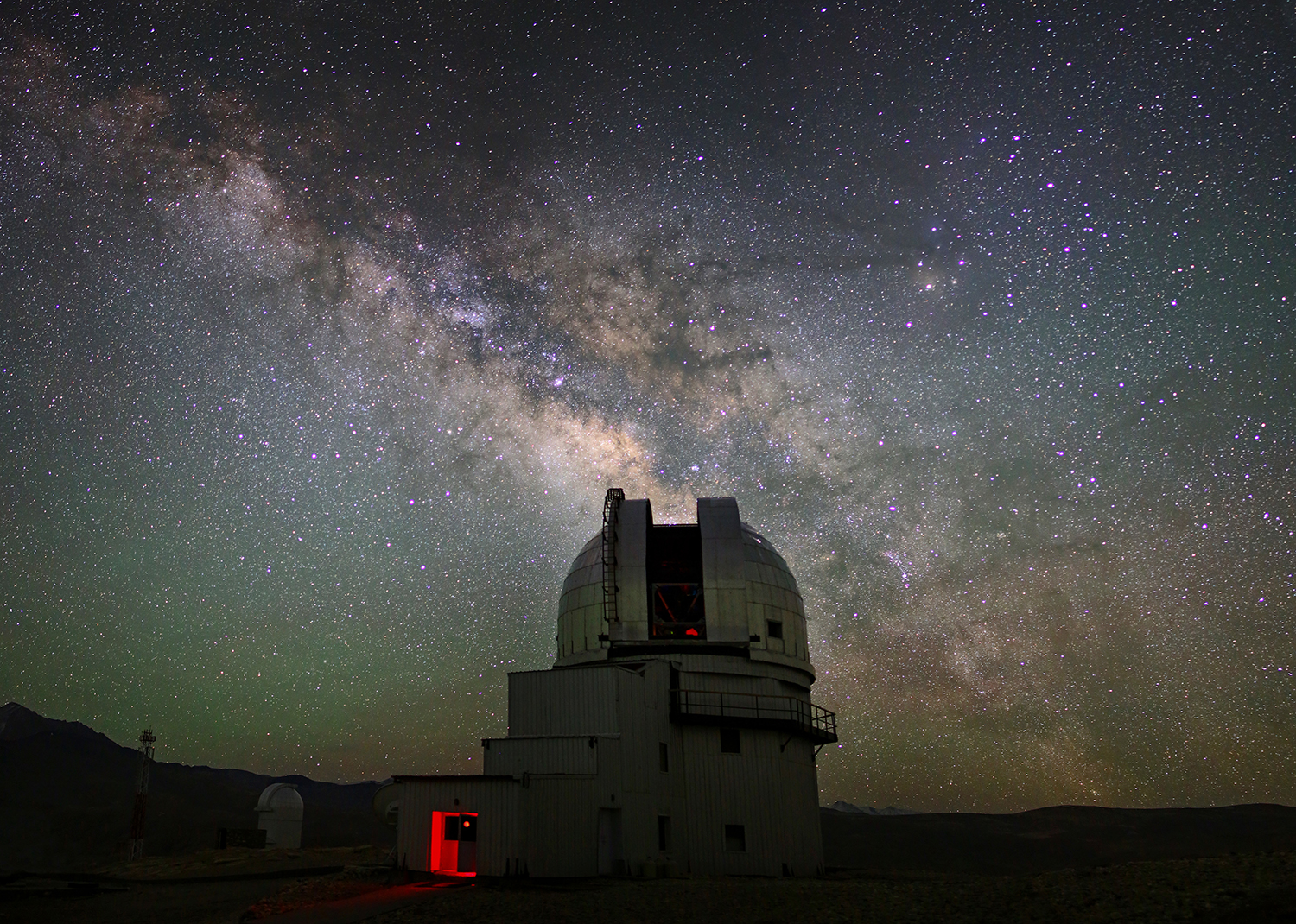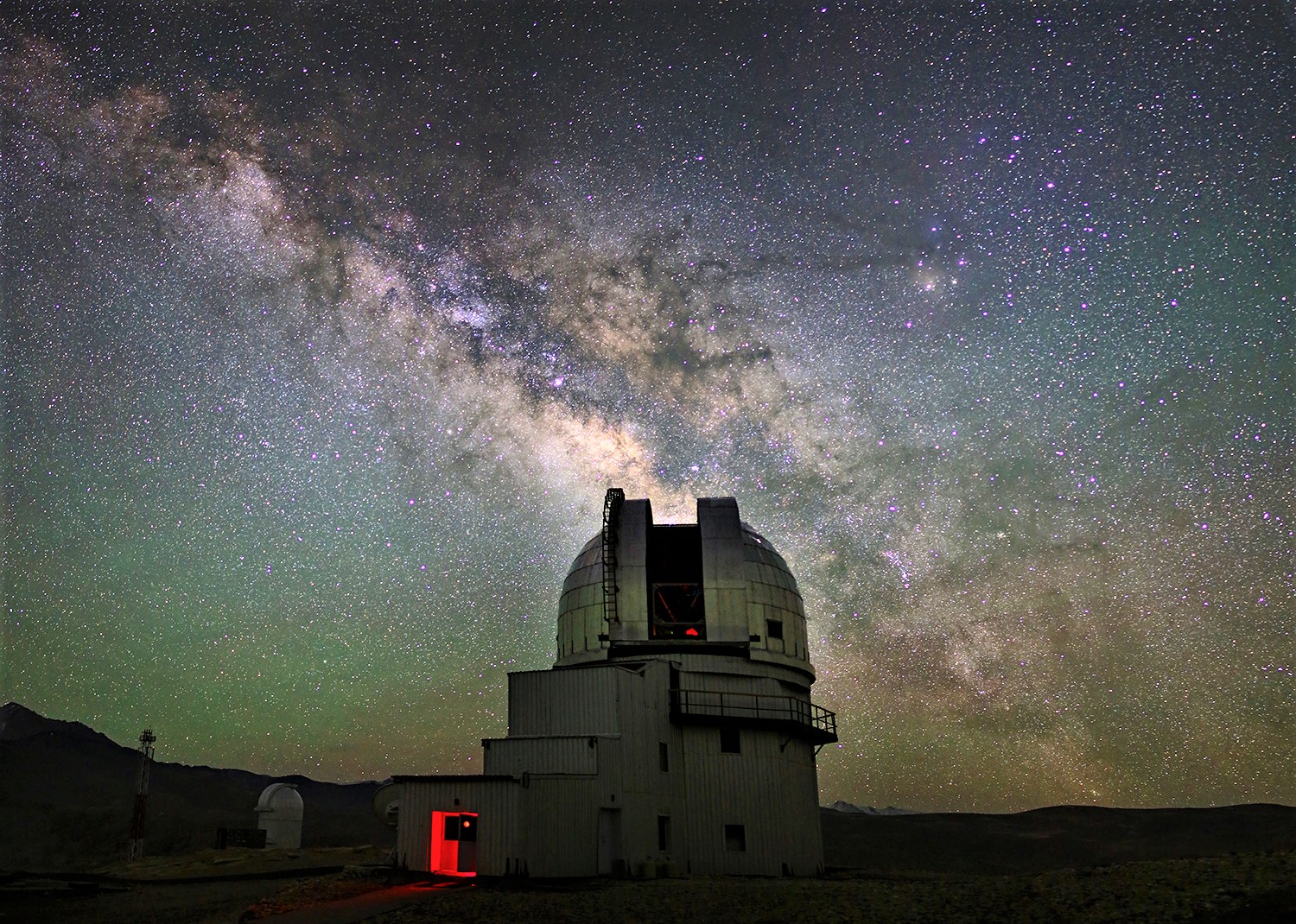“From our home on Earth, we look out into the distances and strive to imagine the sort of world into which we were born.” – Edwin Hubble
In the recent decades, mankind’s understanding of outer space has grown by leaps and bounds as the technology used to explore the celestial world has consistently and dramatically improved. Modern observatories across the world have combined the classical knowledge of astronomy with cutting-edge technology to unlock the secrets of a universe both weird and wonderful.
India too has devoted significant time and effort to building observatories that are helping create an entire new generation of astronomers through experiences that will define human interaction with space for decades to come. Not only this, these facilities also give the public an opportunity to experience the breathtaking brilliance of a starry night sky.
Here are 7 of India’s most spectacular observatories. So if you are travelling and find yourself near one of these unbeatable stargazing spots, don’t miss the opportunity to pay them a visit!
1. Indian Astronomical Observatory, Hanle

Perched at almost 15,000 feet, the Indian Astronomical Observatory at Hanle (in Ladakh) has always made Indian scientists proud. Remotely operated by the astronomers from Indian Institute of Astrophysics (IIA) in Bangalore, it is the second-highest observatory in the world and has the 2m class Chandra telescope.
Clear, cloudless skies throughout the year and very little artificial light makes this an ideal location for astronomical observation. No wonder the outputs of this observatory have been used by Indian scientists to publish over 120 papers that have helped astronomers all over the world.
2. Vainu Bappu Observatory, Kavalur
Another astronomical observatory owned and operated by Indian Institute of Astrophysics (IIA), Vainu Bappu Observatory is home to the Vainu Bappu Telescope, which was the largest telescope in Asia until a 3.6 meter telescope was set up at Nainital’s ARIES observatory in 2016.
Named in honour of M.K. Vainu Bappu, (famous astronomer and former director of the Kodaikanal Observatory), this thimble-shaped observatory is located at Kavalur, a small village nestled within the verdant sandalwood forests of Javadi Hills in Tamil Nadu.
You May Like: This Couple’s Stunning Documentaries Are Taking Space Dreams to Rural Kids in India
3. Kodaikanal Solar Observatory
Photo Source
The Kodai Solar Observatory, run by the Indian Institute of Astrophysics in Tamil Nadu, is located on the southern tip of the Palni Hills in Tamil Nadu. It’s among the only two observatories in the world (the other one is in USA) that has over 100 years of data on the sun and its influence on Earth and surrounding space.
Interestingly, the job of preserving daily records at the observatory has been performed by the same family for generations. Every day, 55-year-old Devendra P walks uphill to the observatory to position the telescope and take photographs, just like his father and his grandfather used to in their time.
4. Ooty Radio Telescope, Ooty
Photo Source
Designed and made completely in India, Ooty Radio telescope continues to be one of the most sensitive radio telescopes in the world. A 1,740-foot-long and 98-foot-wide cylindrical paraboloid telescope, it is a part of the National Centre for Radio Astrophysics (NCRA), under the ambit of Tata Institute of Fundamental Research (TIFR).
The observatory is perched on a natural slope of 11 degrees, which allows the telescope to track celestial sources for nearly ten hours in the east-west direction. As a result, the discoveries made here have been particularly useful in explaining various celestial phenomena.
5. Udaipur Solar Observatory
Photo Source
Situated on a tiny island at the centre of Fatehsagar Lake, Udaipur Solar Observatory was designed as per the model of solar observatory at the Big Bear Lake in Southern California.
One of the six GONG (Global Oscillations Network Group) sites in the world, this observatory is second in the world (after China) to have the unique multi-application solar telescope (MAST) for the detailed study of solar activities such as solar flares and eruptions.
Interestingly, the observatory’s location is strategic, as well as scenic – the large water body surrounding the telescope decreases the amount of heating of the surface layers, reducing the turbulence in the air mass and thereby improving the image quality.
6. ARIES Observatory, Nainital
Photo Source
In 2016, in a major technological advancement for astronomy in India, Asia’s largest and first-of-its-kind optical telescope was unveiled at Devasthal near Nainital. Called the Aryabhatta Research Institute for Observational Sciences (Aries) telescope, it is a joint effort by Indian, Belgian and Russian scientists.
The optical telescope’s primary mirror is 3.6 m in diameter, helping in further research of star structures, high energy radiations, exoplanets and properties of star clusters. A project that has been long in the making, the results of this outstanding telescope is eagerly awaited by Indian scientists.
7. Mount Abu InfraRed Observatory (MIRO)
Photo Source
Perched on the 5,000-foot-high craggy peak of Mt Gurushikhar (the highest peak in the Aravalli range), Mount Abu InfraRed Observatory is the first major facility in India to be specifically designed for ground-based infrared observations of celestial objects.
Despite the rather modest astronomical facilities at this observatory, the data obtained from the observations made from the MIRO have resulted in more than 200 peer reviewed research publications. MIRO is in the process of acquiring a larger, 2.5m telescope that will give a boost to the observatory’s research programmes in atmospheric and space science.
Also Read: #TravelTales: We’ve Found the Best Places to Stargaze in India. And They’ll Leave You Spellbound!
Like this story? Or have something to share? Write to us: contact@thebetterindia.com, or connect with us on Facebook and Twitter.
NEW: Click here to get positive news on WhatsApp!
If you found our stories insightful, informative, or even just enjoyable, we invite you to consider making a voluntary payment to support the work we do at The Better India. Your contribution helps us continue producing quality content that educates, inspires, and drives positive change.
Choose one of the payment options below for your contribution-
By paying for the stories you value, you directly contribute to sustaining our efforts focused on making a difference in the world. Together, let's ensure that impactful stories continue to be told and shared, enriching lives and communities alike.
Thank you for your support. Here are some frequently asked questions you might find helpful to know why you are contributing?

